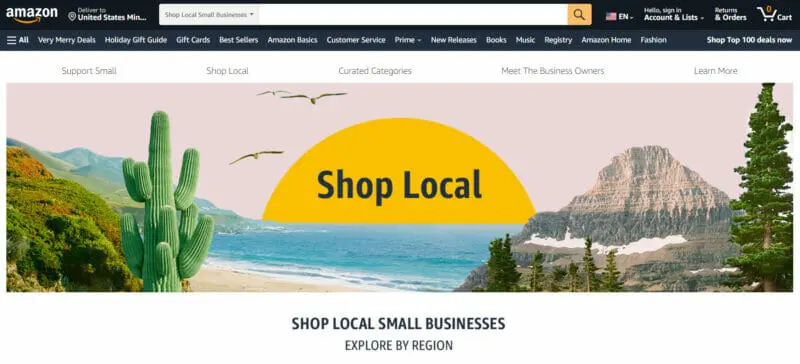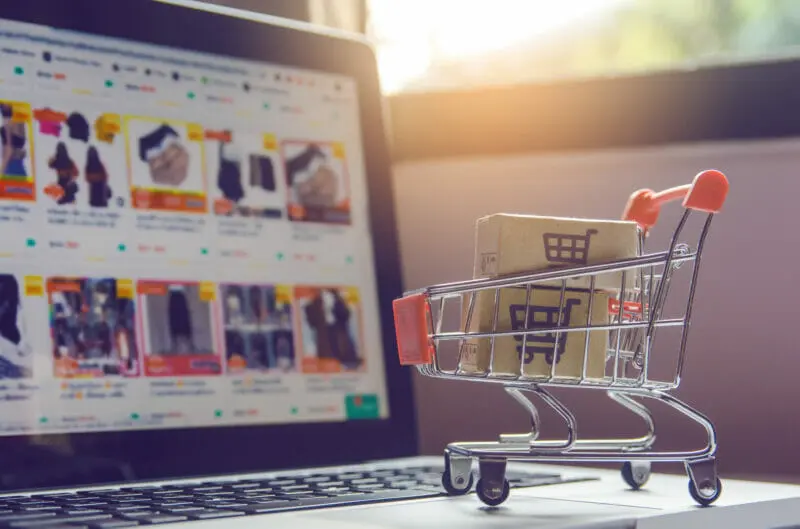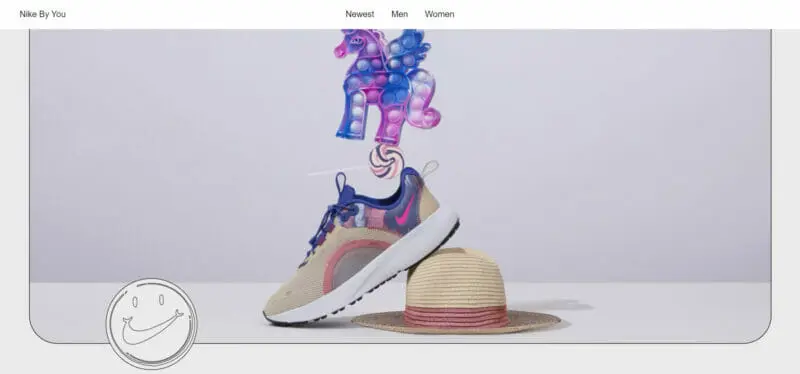With the explosion of e-retail stores and online payment systems, more and more people have come to embrace online shopping. Industry analysts pegged the number of global online shoppers in 2022 at over 2.3 billion or about 29% of the world’s population of 8 billion. The 2022 figure rose by 286 million from 2021.
The growth of e-commerce can be attributed to factors such as improved internet connectivity and the advent of online shopping events, like Black Friday and Cyber Monday.
E-shopping convenience and accessibility also encourages consumers to purchase products online. Buyers can make purchases without leaving the comfort of their home. They also get to choose from several delivery options and enjoy a more tailored shopping experience. They can check product information, as well as customer reviews, from anywhere, anytime.

18 Online Shopping Trends to Watch Out for in 2023:
- The Continued Growth of Online Selling
- Stricter Returns Policies
- The Rise of AI and Machine Learning
- What to Do with One-Time Buyers?
- Reliance on Subscription Model for Customer Loyalty
- The Growing Need for Customization
- Brands Will Use Zero-Party Data for Personalization
- The Upward Trend of Mobile Shopping
- The Growing Popularity of Local and Independent Businesses
- The Prevalence of Voice Search
- The Need for Offering More Payment Options
- Consumers to Expect Flexible Fulfillment
- Offering a Better Online Shopping Experience
- Websites Optimized for Conversions
- Interest and Focus on Sustainability
- Leveraging Chatbots
- Adopting Augmented and Virtual Reality Technology
- Social Media Platforms as Sales Channels
- More Brands to Host Live Shopping Events
- Omnichannel Customer Support
- Frequently Asked Questions
The Continued Growth of Online Selling
E-commerce has become so popular in the United States that it’s expected to reel in an increased revenue of $563 billion by 2025. The revenues of America’s e-commerce sector may be worth $1.47 billion by 2025, up from $904.9 million in 2022. This increase is due in part to factors such as the increasing use of mobile devices, growth of social media and social commerce, online marketplaces, and changing consumer behavior.
The number of US-based digital buyers in 2022 reached 268 million, an increase of 3.7 million from the year before. E-commerce stood for 14.8% of America’s total retail sales.
Stricter Returns Policies
While a flexible returns policy helps attract buyers, brands are likely to study their current policies amid an unprecedented rise in returns. 67% of retailers have already begun imposing return fees even as e-commerce recorded the highest returns among all retail channels.
Market analysts say inflation and bracketing were the main factors behind the trend. Bracketing refers to buying several items (such as apparel), trying them on at home, and keeping what works for you.
96% of consumers read the return policy of a business before buying, and 92% say an easy process motivates them to shop from the same brand in the future.
Brands can reduce their return rates and keep their customers happy at the same time by finding out the common reasons for returns. Companies must also position their policies more prominently on the product pages, include an FAQ section on returns, and review sizing charts. Better product descriptions, which clearly highlight an item's top features, high-quality photos (even 3D) and videos, customer reviews, and user-generated content will also help. Additionally, businesses may suggest exchanging the returned item with a similar product (perhaps with different color or style) that has the same price.
The Rise of AI and Machine Learning
As more organizations integrate the use of artificial intelligence and machine learning into their work processes, e-commerce businesses are quick to adopt these new technologies to promote a more seamless and personalized customer experience.
AI is increasingly being used in areas such as customer service, sales, and marketing. Similar to how sales associates assist buyers in their shopping journey when in a brick-and-mortar establishment, online shops leverage AI and machine learning to provide customers with a more tailored shopping experience.
This allows retailers to offer smarter recommendations and product search results based on a consumer’s shopping behavior, looking into factors like their search history and previous purchases.
While these technologies aren’t new, their use in the e-commerce industry is relatively recent. This implies that we’ve yet to tap into their full potential.
What to Do with One-Time Buyers?
With the shift toward e-commerce, one-time buyers have become more prevalent. These buyers pose a challenge to retailers in terms of retention—how can you transform them into loyal customers?
Even if you’ve revamped your sales and marketing campaigns, sales are likely to stagnate without a solid marketing campaign and retention strategy. While acquiring new customers is important, paying attention to customer retention can help ensure business sustainability.
Taking care of your existing customers isn’t just about nurturing their loyalty. Customer retention is a cost-effective strategy that can also boost your ROI and even encourage new customers to check out your products or services. Existing customers are also more likely to refer your business to their peers, potentially driving an increase in your revenue by up to 95%.
Reliance on Subscription Model for Customer Loyalty
More businesses will explore the subscription model to ensure customer retention and recurring revenue. It’s projected that 75% of direct-to-customer (DTC) brands will offer subscriptions in 2023.
DTC will also look to this model to recover money spent on social media advertising and influencer marketing. Meanwhile, consumers will expect locked-in rates and cashback as part of their membership.
15% of online shoppers have signed up to at least one subscription provider. 40% of American consumers who answered a Recurly poll said that exclusive access to services or content was their main reason for subscribing. Gen Z subscribers (44%) were particularly interested in unique product bundling, discounts, and perks.
The Growing Need for Customization
Customization is one of the most crucial aspects to focus on in 2023. This goes beyond addressing the customer by their first names in your communications or thank-you cards. Personalization can be done through tailored packaging, a personalized shopping experience, interactive content, and customizable services and products.
Some online retailers use quizzes and surveys to gain a deeper insight into a customer’s needs and behaviors. AI and machine learning technologies can also be used to deliver a highly individualized buying experience.
Nike By You is a prime example of customizable products that can be shared on various social media platforms. Consumers can select what area of the shoe (tongue, quarter, tip, eyestay, etc.) they can customize, along with the colors and materials.
By allowing customers to personalize their choices, you’re encouraging them to make a purchase, thus upping your conversion rates.
Brands Will Use Zero-Party Data for Personalization
With browsers set to phase out third-party cookies in 2024, brands will start gathering customer data through the activities mentioned above (quizzes and polls), sign-up registration forms, and messages sent to consumers. Information that clients voluntarily give businesses through this method is called zero-party data. Brands can then use these details to personalize offers in future client interactions on any platform.
Marketers depend on cookies or small files that stay with an internet visitor's computer after visiting their brand's website. The cookie tracks the user's behavior while surfing the web, providing brands with data for customizing future content or offers.
The Upward Trend of Mobile Shopping
It’s no secret that having a mobile-friendly site can boost your sales and conversion rates. As more people turn to mobile devices for online shopping, adopting a responsive and mobile-friendly website is fast becoming a standard best practice for businesses.
Aside from being mobile-friendly, you also have to consider incorporating smarter mobile shopping tools for your business. These can boost your reputation, as well as make customers perceive you as legitimate, trustworthy, and relevant.
The Growing Popularity of Local and Independent Businesses
The pandemic has brought about the rising popularity of patronizing local or independent businesses. E-commerce platforms like Amazon are creating programs to encourage consumers to shop local and support small businesses.

Source: amazon.com
Moreover, consumers are increasingly patronizing products and services from purpose-driven brands that prioritize transparency, values, and ethics. In 2022, the importance of values alignment was higher, with 82% of shoppers saying they prefer to shop from businesses that match their stand on sustainability, equity, and community service.
The Prevalence of Voice Search
With the rise of AI and machine learning, we’re also seeing the growing popularity of voice search technology in online shopping. Voice search has become smarter and has become a big part of our daily lives, being accessible through mobile devices and smart speakers.
Optimizing your website for voice search can help you stay ahead of the competition. Focus on keywords and phrases and the common information that consumers look for, such as your contact details, business hours, and store address.
The Need for Offering More Payment Options
Offering additional payment options makes it easier for customers to make and pay for purchases. Aside from accepting checks or cards, consider adding a flexible payment plan with no extra fees for your customers to facilitate a more seamless shopping experience.
If you’re operating a brick-and-mortar establishment, you might also want to offer a contactless payment option for buyers.
Consumers to Expect Flexible Fulfillment
Although in-store shopping experienced a revival in 2022, frequent online shoppers will continue to look for flexible fulfillment options, including buy online and pick up in-store (BOPIS) on the same day.
Other variations include "reserve online, try, buy, and pick up in-store" for luxury customers, warehouse pickup, and local delivery. For local delivery, an outlet nearest the customer delivers the product instead of the main store processing the shipment.
Offering a Better Online Shopping Experience
Online shopping isn’t just limited to your website. Expanding shopping avenues by selling directly through social media platforms helps create a more seamless online shopping experience. Consumers can directly buy your products without ever having to leave Facebook or Instagram, for example. This also highlights the need to focus on content shown on your social media channels.

Source: freepik.com
Websites Optimized for Conversions
Creating an optimized website is important if you want to keep up with the latest shopping trends. One of the steps in preparing an efficient site is conducting A/B testing. This helps you determine which elements work and which ones don’t, enabling you to create a highly optimized website for online shopping.
Keep in mind that every detail counts, from colors to layout and page load speeds.
Interest and Focus on Sustainability
This echoes a concept that we’ve previously touched on, which is the growing popularity of supporting purpose-driven brands. Consumers are expecting brands to embrace sustainability and more eco-friendly measures. This renewed focus on renewable and sustainable products, manufacturing methods, and practices highlight the need for businesses to adopt environment-friendly practices and operations.
By adopting more sustainable measures, such as using renewable or clean energy or incorporating sustainable ingredients into your products, you’d be able to expand your reach to include environmentally-conscious consumers. You’d also become environmental stewards while enjoying reduced operation or manufacturing costs.
Leveraging Chatbots
Yes, chatbots have been around for quite some time now, but they’re still perfectly capable of delivering a personalized shopping experience. Aside from lightening the workload of your customer service department, chatbots are also more accessible and can be programmed to offer relevant recommendations to customers. This lets your customers get assistance whenever they need it, without having to wait for a live customer service representative.
Adopting Augmented and Virtual Reality Technology
Online shopping offers unparalleled convenience. Customers don’t need to go to a physical store to check a product’s price, availability, and customer reviews. However, even with product photos and information, there may still be a gap between customer expectations and the actual product.

Source: freepik.com
Augmented and virtual reality can transform customer shopping experience by allowing potential buyers to visualize how your products will look like in the real world. Think of it as a virtual tour but tailored for products. By incorporating AR and VR into your website, customers would be able to better imagine how a hat, handbag, or makeup product would look like on them, allowing them to make smarter buying decisions.
Social Media Platforms as Sales Channels
Social media platforms, such as Instagram with its Instagram Shopping, have evolved to become more than just an avenue for you to showcase your products or services. They’ve become marketplaces themselves, allowing visitors to research products or purchase from third-party sellers without having to leave the app.
Social commerce, or purchasing directly from social media platforms, is fast becoming an iteration of online shopping.
More Brands to Host Live Shopping Events
More sellers will organize Facebook Live and other live stream events to promote and sell their products. To create excitement, brands and merchants will offer discounts that will take effect only during the live shopping date. These real-time sessions also encourage engagement, as viewers can ask questions and get answers on the spot.
Omnichannel Customer Support
An omnichannel sales experience won’t be complete without excellent customer support across all your sales channels. Customers who want to reach you for product or service concerns should be able to do so easily. Aside from offering live customer support, utilizing chatbots across your sales channels can also improve and deliver a more well-rounded customer shopping experience.
Final Thoughts
Online shopping is here to stay. For businesses to keep up with changing demands and behaviors, it’s best to arm yourself with enough knowledge on emerging trends. Determining which trends align with your business’s vision, goals, and objectives can help you craft more relevant and competitive sales and marketing campaigns.
Embracing change, especially if you know what to expect, can enable your business to reach new heights. Which trends are you looking forward to the most? What challenges do you think will crop up over the next few months? Let us know your thoughts!
Frequently Asked Questions
What role does AI play in the changing e-commerce trends?
AI and machine learning will no doubt play a huge role in advancing existing e-commerce practices. They can offer automated workflows, smarter search results and recommendations, and a more convenient shopping experience. When paired with voice search technology, you can better optimize your business for future sales opportunities.
How will the relationship between online shopping and social media change?
Social media platforms have become shopping channels. With Instagram and Facebook creating a dedicated marketplace for users, they’re driving the advent of social commerce, allowing visitors to purchase a product directly on the platforms themselves.
Which changes should I prioritize?
Do you want to prioritize offering additional payment options or do you want to work on optimizing your website for voice search? Perhaps you want to review your existing business model and prioritize highlighting your brand values? While all of the trends are relevant for business growth, this ultimately depends on your business’s goals and objectives.
How will automation change the face of e-commerce?
Automation can help deliver a more seamless and well-rounded shopping experience for your customers.
How will social media platforms like Twitter keep up with these changes?
Social media channels such as Facebook and Instagram have already created a dedicated marketplace for online shopping. Twitter has recently launched new ad features and revamped its algorithm to show relevant ads to users. It’s slowly positioning itself in a bid to let brands sell their products directly through the app.






